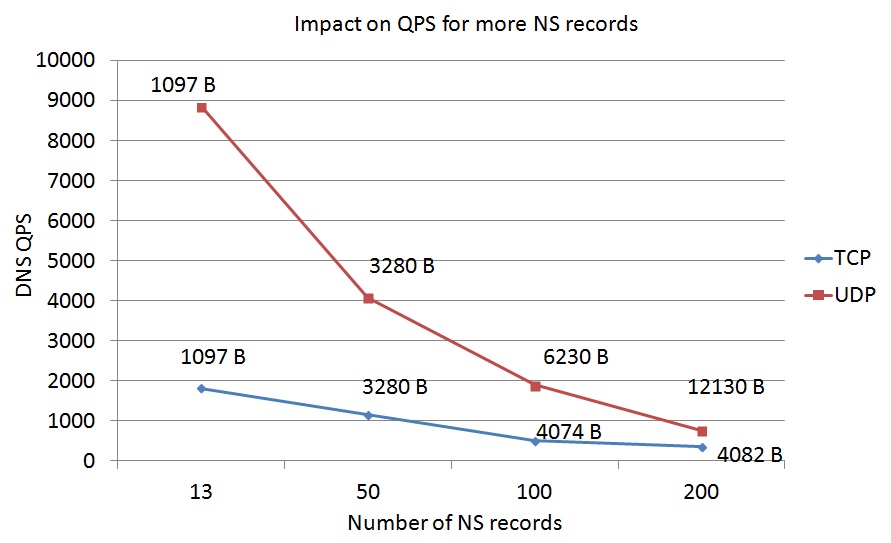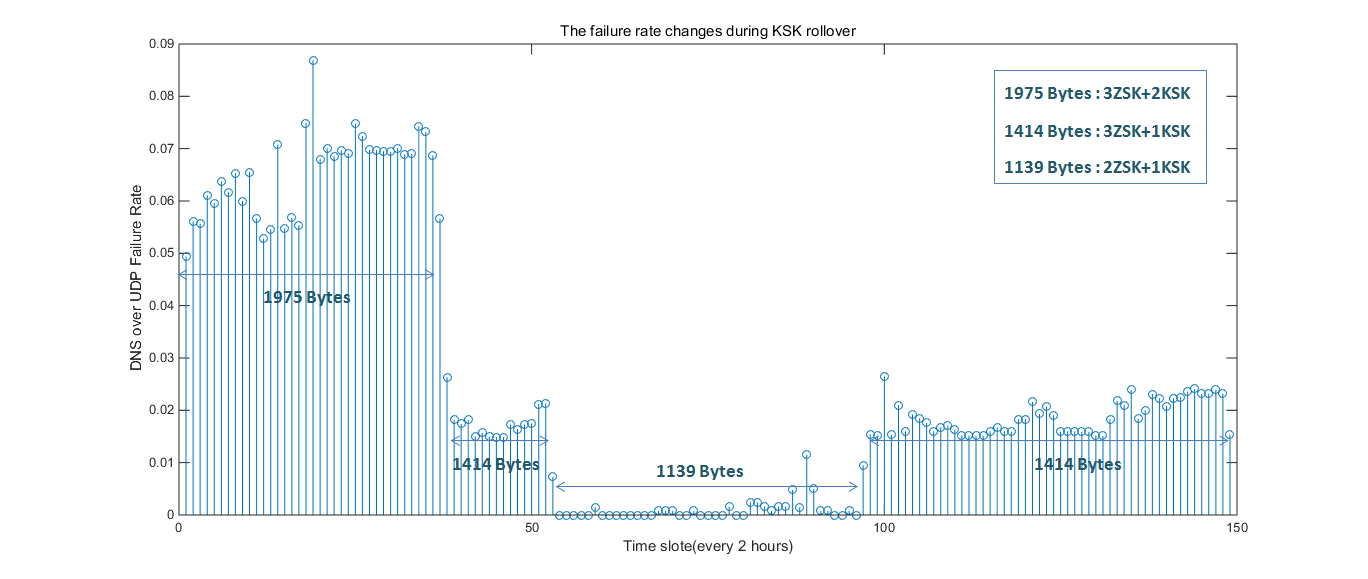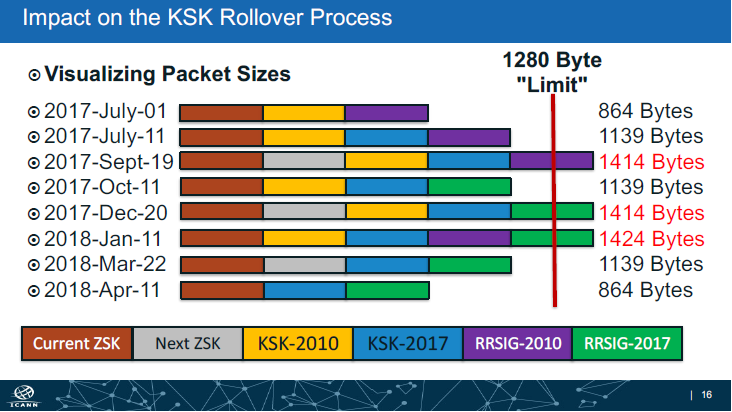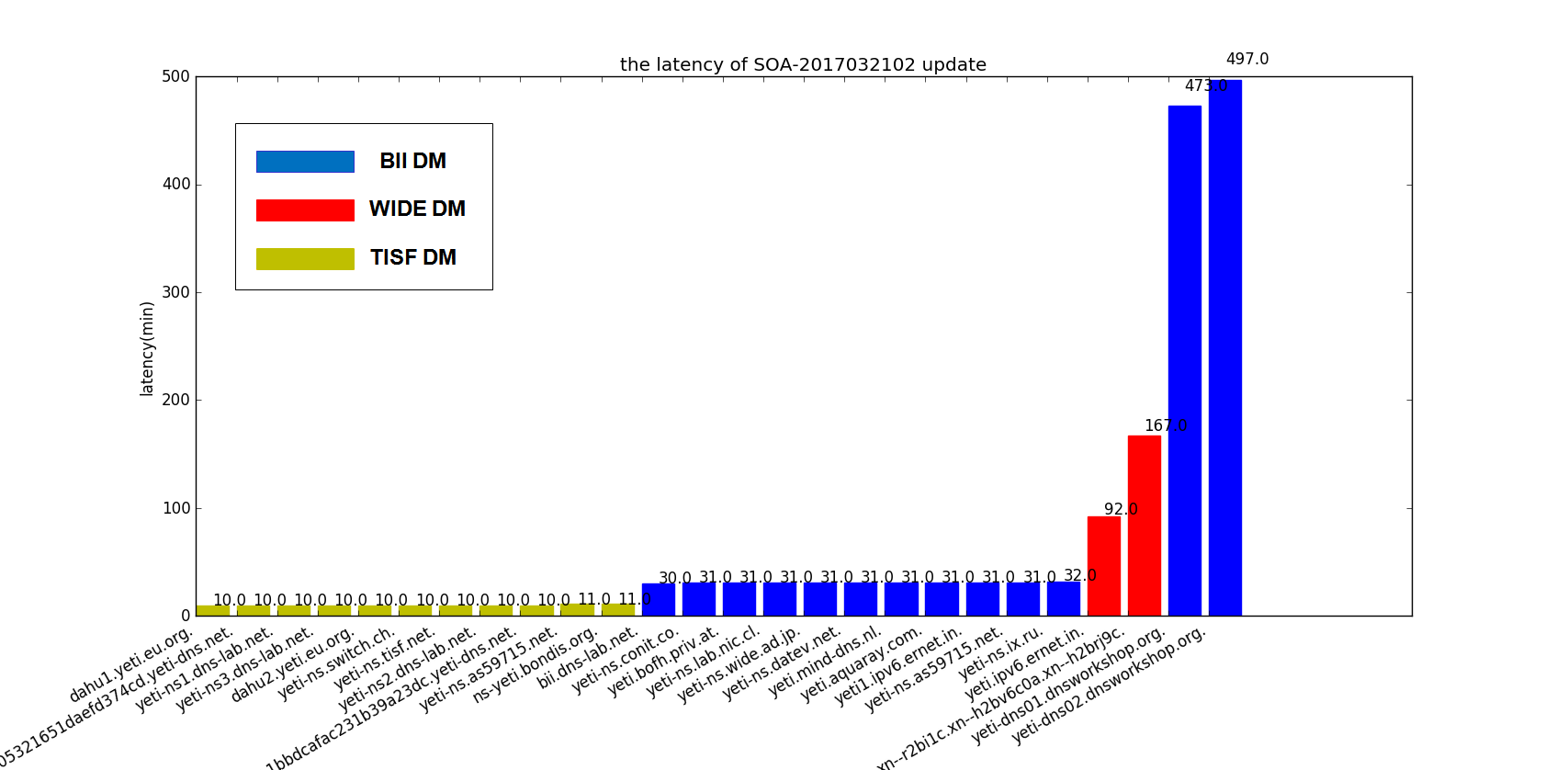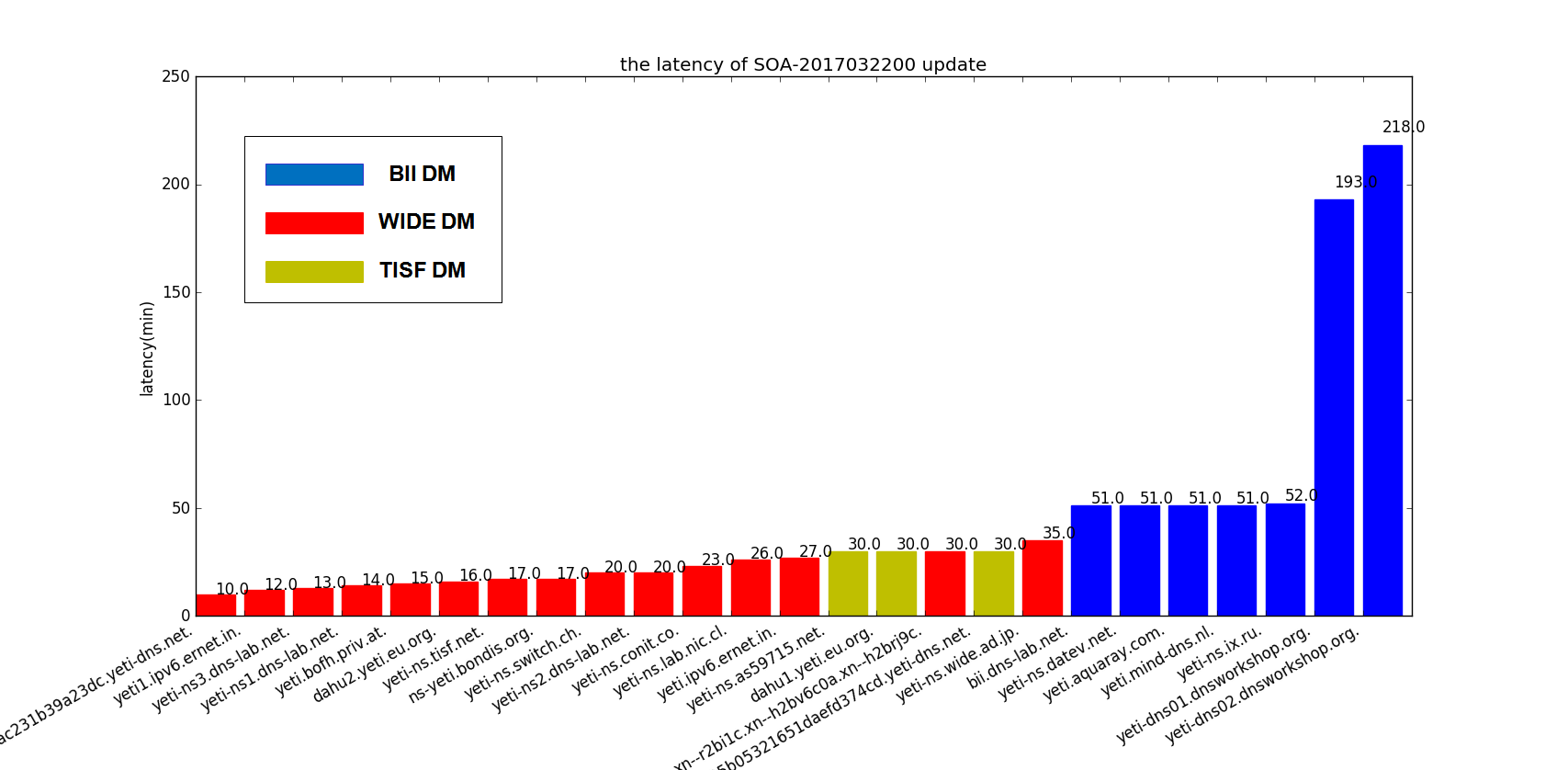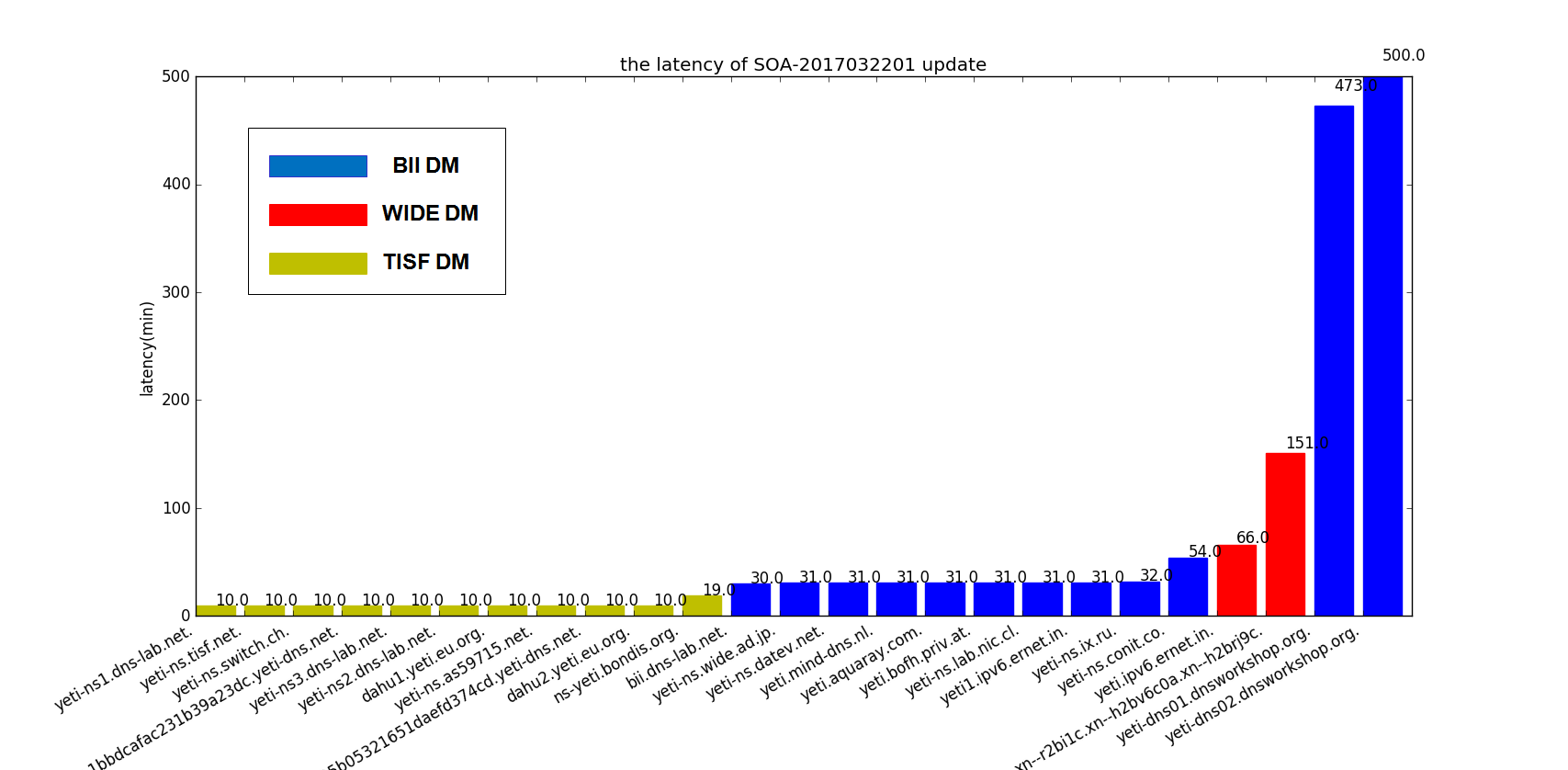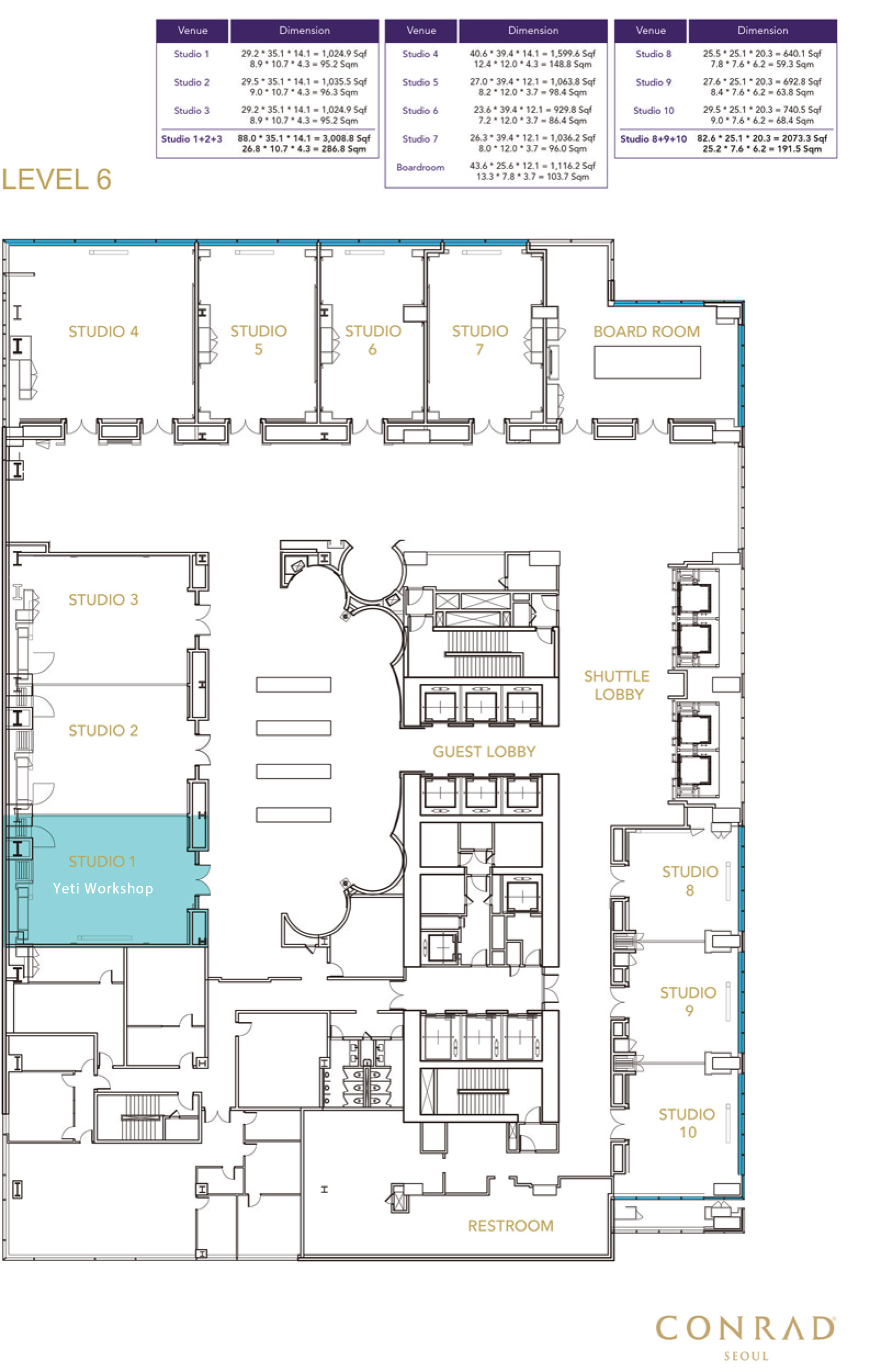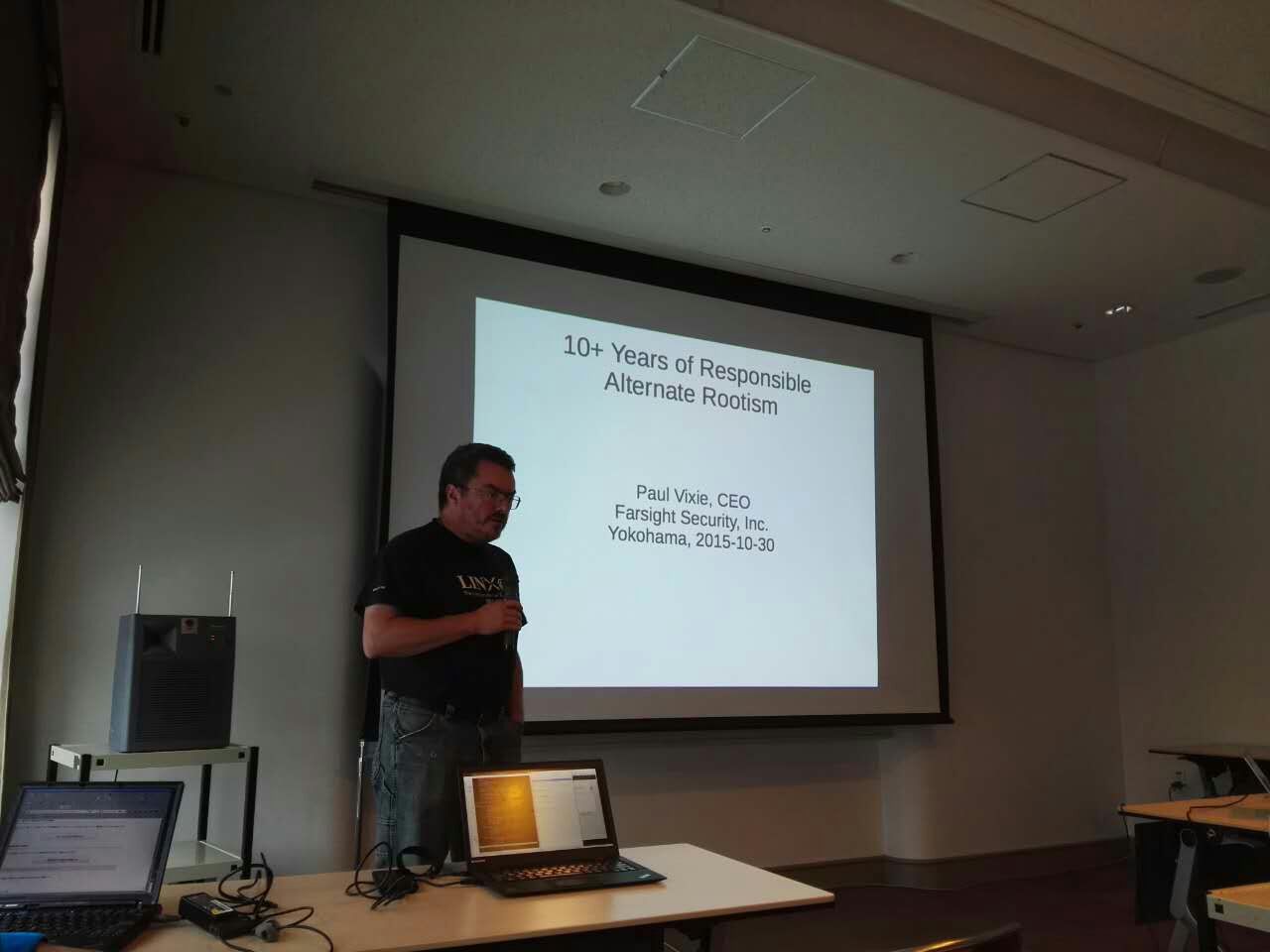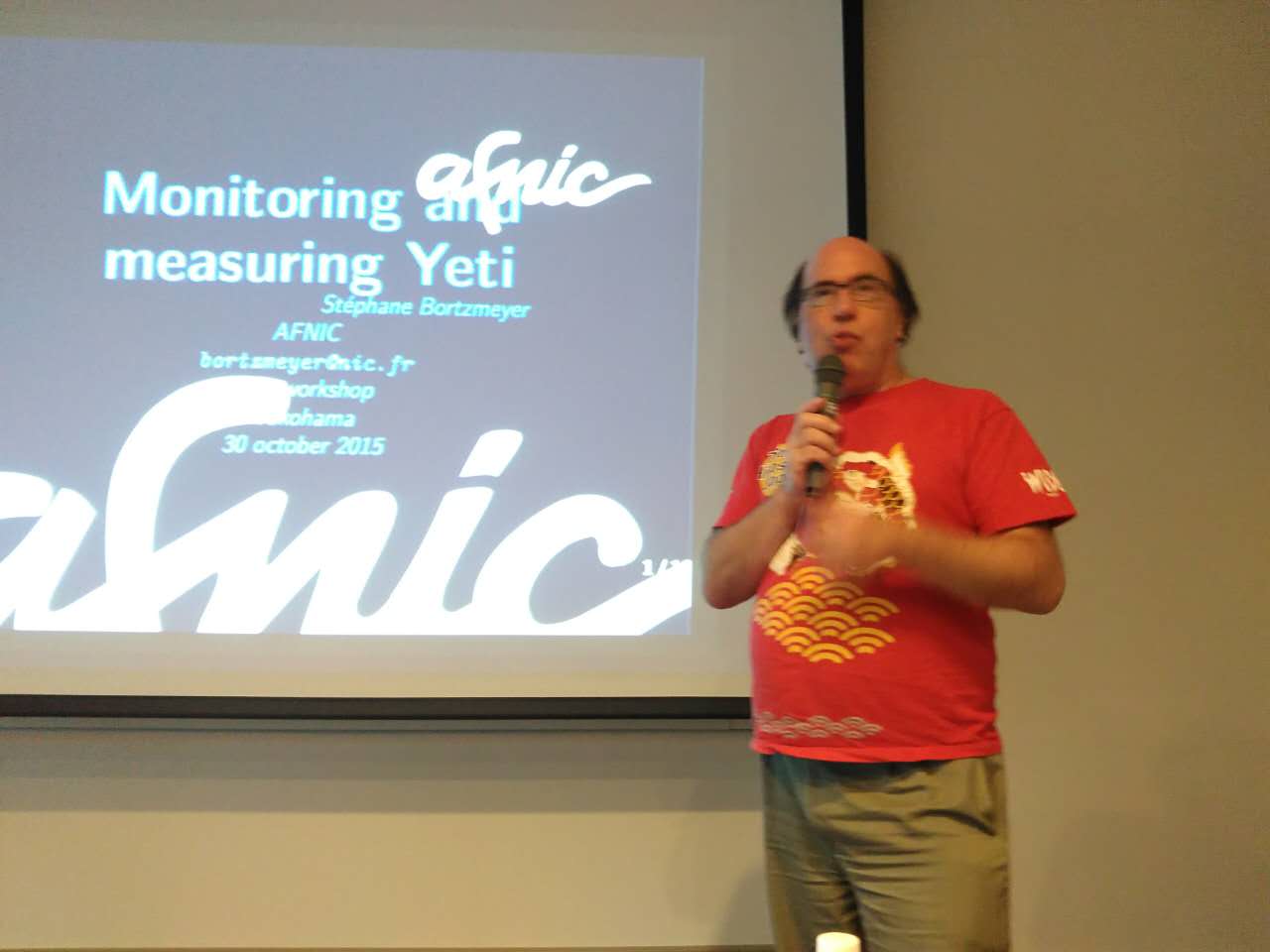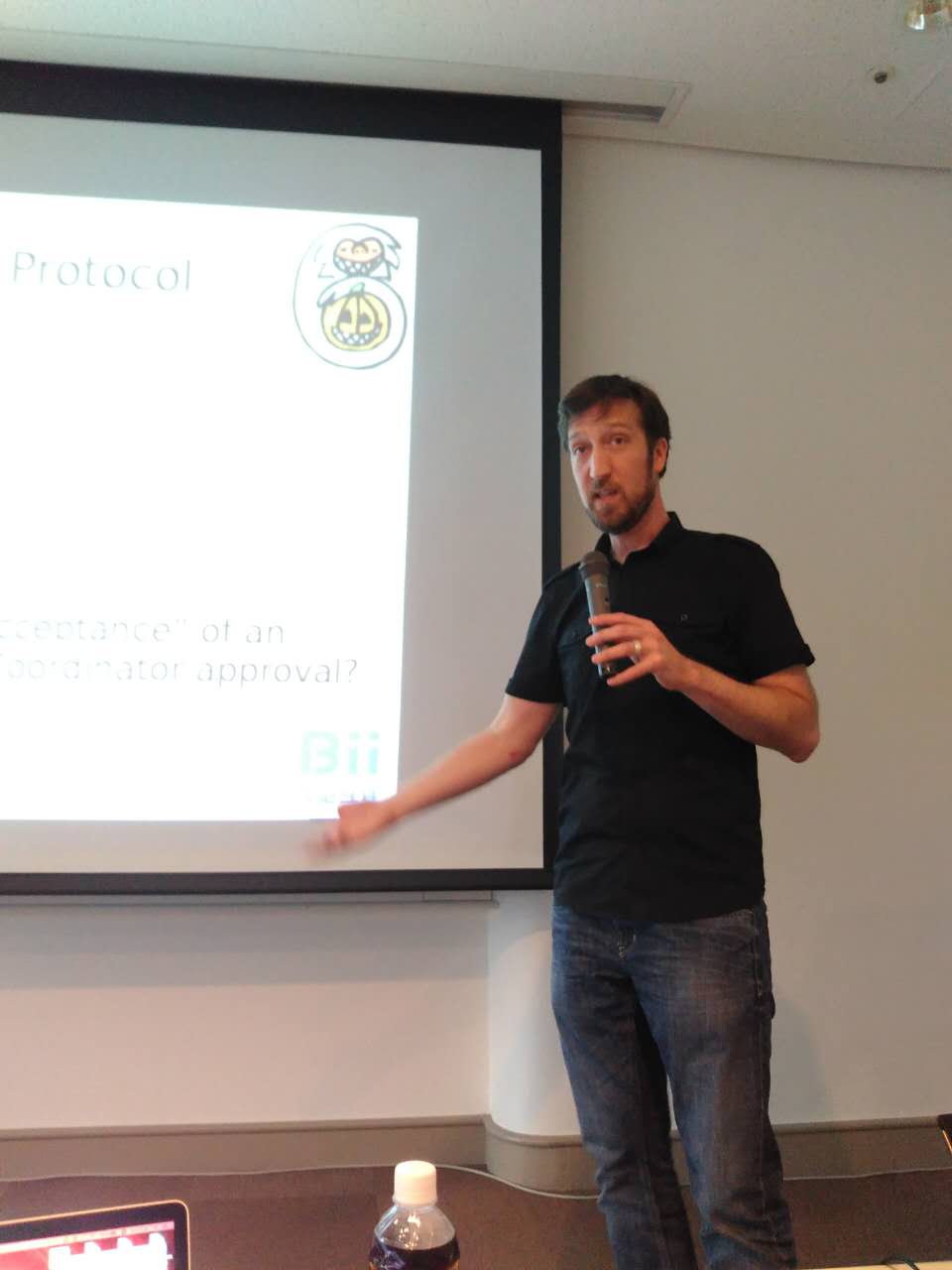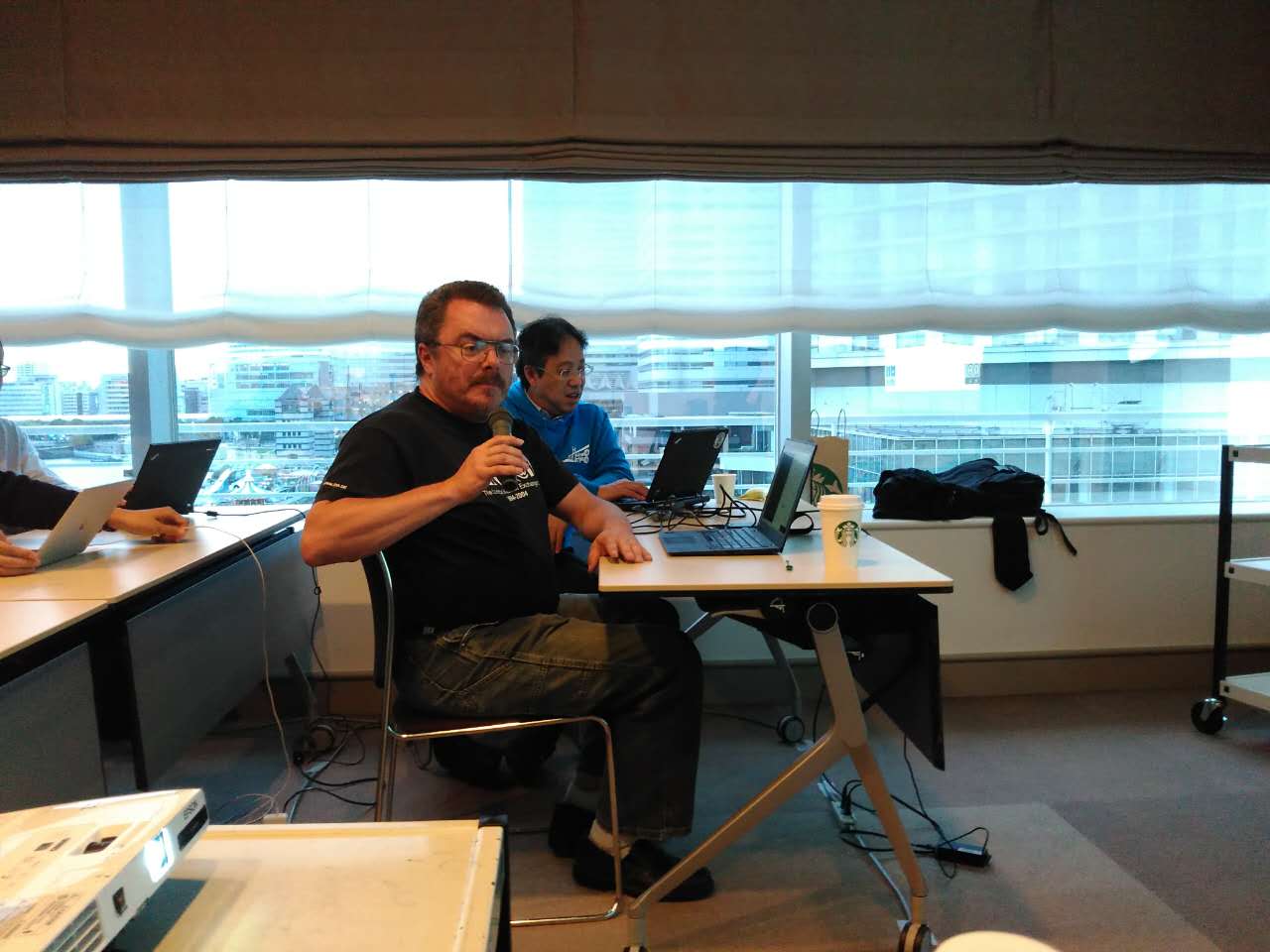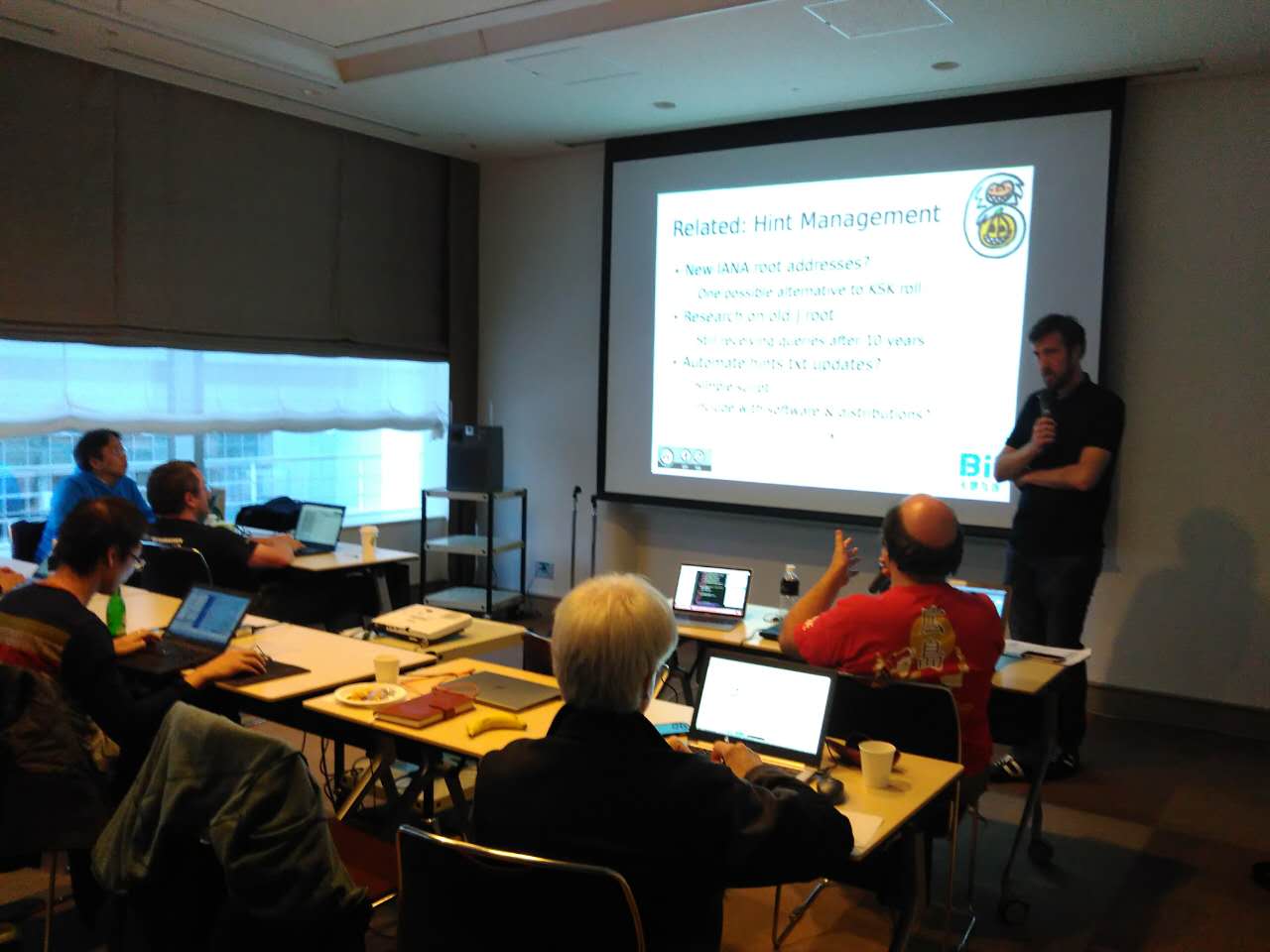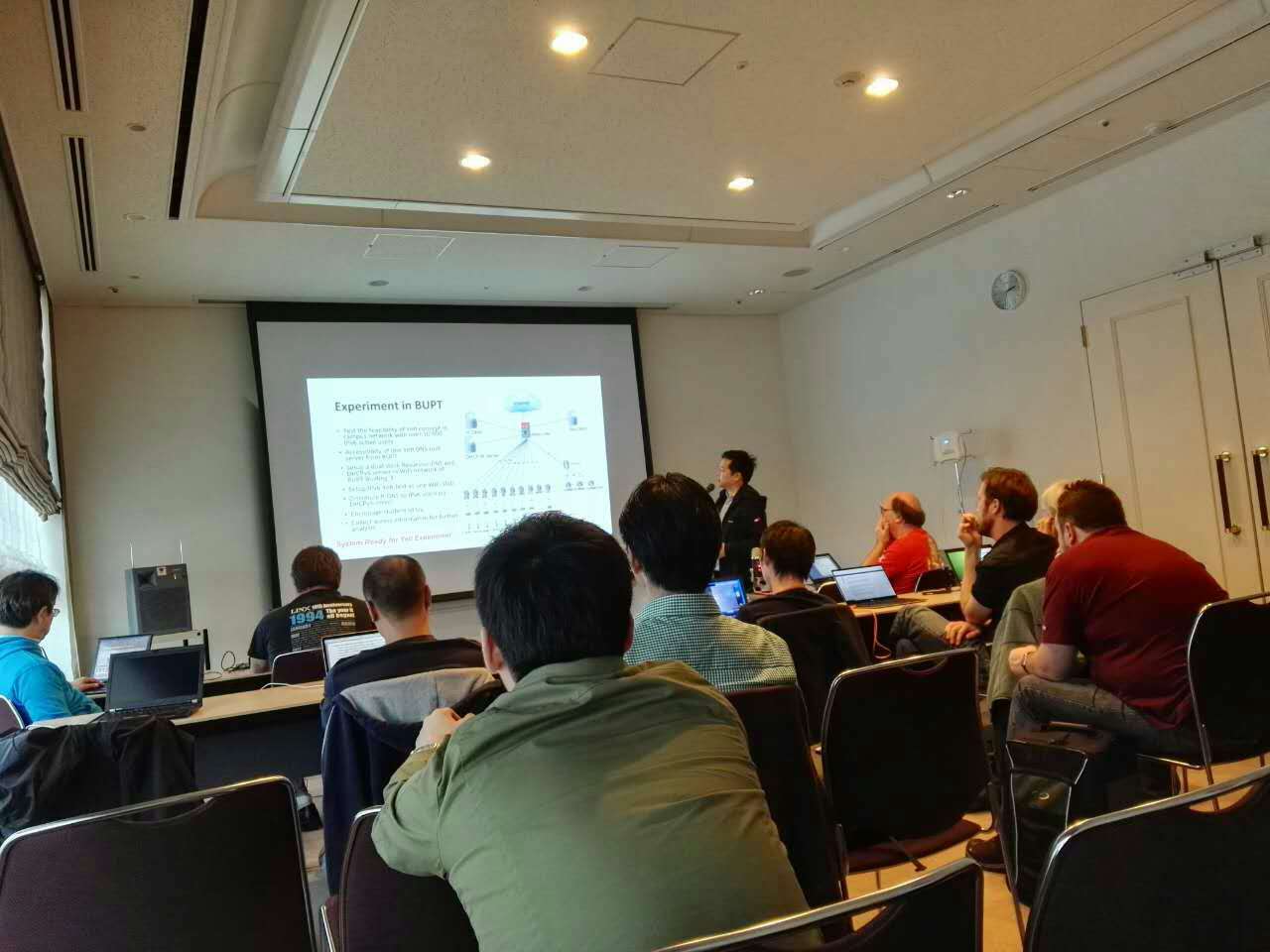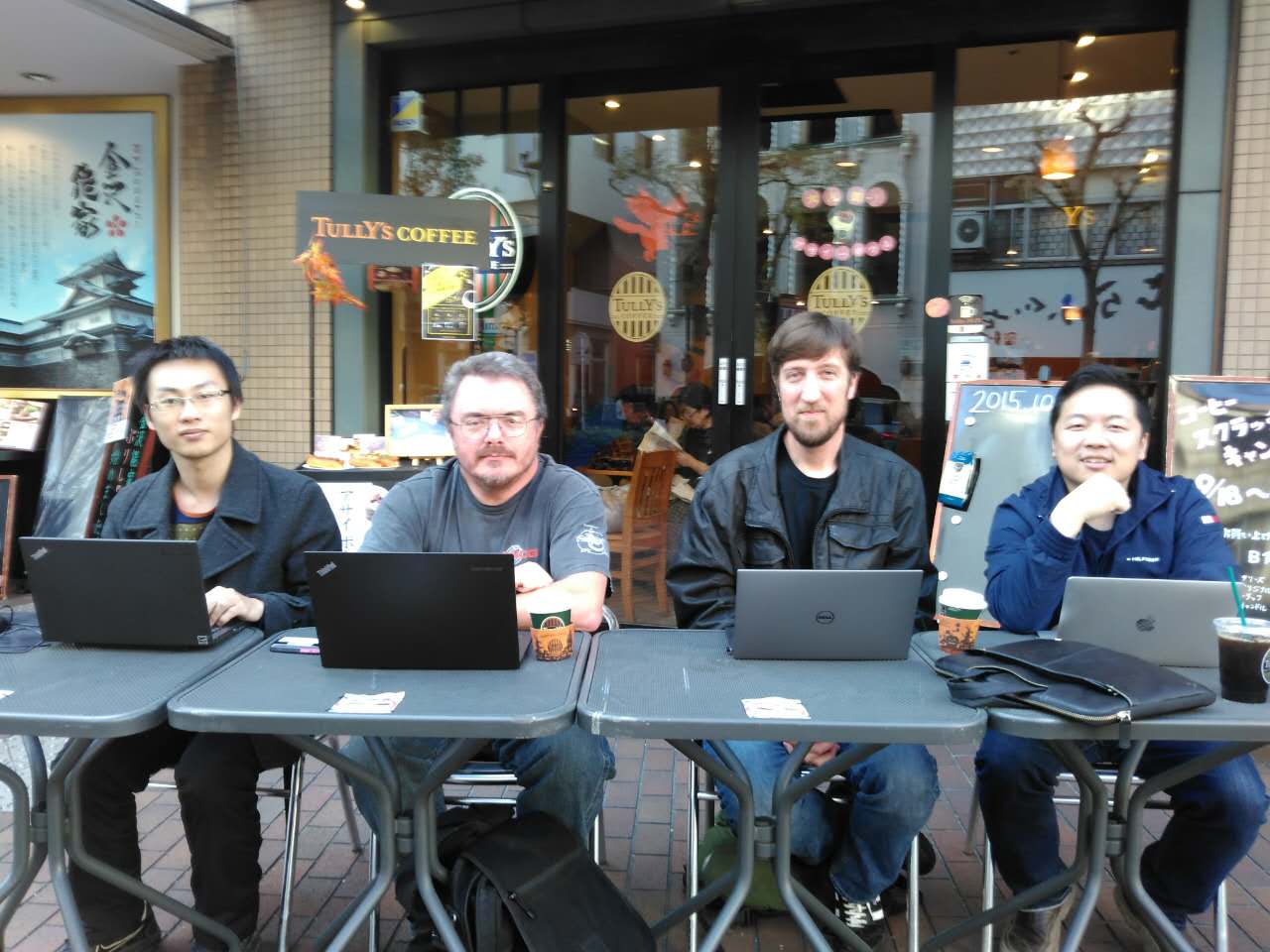1. Introduction
Yeti DNS Project [1] is a live DNS root server system testbed which is designed and operated for experiments and testing. Many people are curious how it works under an environment which is pure IPv6, with more than 13 NS servers, with multiple signers, and testing ZSK/KSK rolling. One key issue here is large DNS responses, because many Yeti experiments lead to large DNS responses - even more than 1600 octets.
Why large DNS responses are relevant and how DNS handles large responses is introduced comprehensively by Geoff’s articles published in the APNIC blog Evaluating IPv4 and IPv6 packet fragmentation [2] and Fragmenting IPv6 [3] (thanks Geoff!). More recently, Geoff published a pair of articles examining the root servers system behavior, Scoring the Root Server System [4] and Scoring the DNS Root Server System, Pt 2 - A Sixth Star? [5] . In these articles, a scoring model is proposed and applied it to evaluate current 13 DNS root servers how they handle large response.
Triggered by Geoff’s work [4] and [5], we formed the idea of scoring the Yeti DNS root server system using the same testing and metrics. The results are summarized in this document.
2. Repeat the Tests on the IANA DNS Root Servers
We first repeat the testing on the IANA DNS root servers. It is expected to confirm the test results, but may show some new findings from different vantage points and metrics. Using the same approach we use the dig command to send queries against each root servers with a long query name for a non-existent domain name like this to get a response of 1268 octets:
dig aaaaaaaa.aaaaaaaaaaaaaaaaaaaaaaaaaaaaaaaaaaaaaaaaaaaaaaaaaa.aaaaaaaaaaaaaaaaaaaaaaaaaaaaaaaaaaaaaaaaaaaaaaaaaaaaaaaaaaaaaaa.aaaaaaaaaaaaaaaaaaaaaaaaaaaaaaaaaaaaaaaaaaaaaaaaaaaaaaaaaaaaaaa.aaaaaaaaaaaaaaaaaaaaaaaaaaaaaaaaaaaaaaaaaaaaaaaaaaaaaaaaaaaaaaa +dnssec @198.41.0.4 +bufsize=4096
And what we see from each root server is shown in Table 1.
| Root |
Response size(v4) |
Truncate (v4) |
Fragment (v4) |
TCP MSS (v4) |
Response size(v6) |
Truncate (v6) |
Fragment (v6) |
TCP MSS (v6) |
| A |
1268 |
N |
N |
1460/1380 |
1268 |
Y(900) |
N |
1440/1380 |
| B |
1265 |
Y |
N |
1460/1380 |
1265 |
Y |
N |
1440/1380 |
| C |
1265 |
N |
N |
1460/1380 |
- |
- |
- |
- |
| D |
1265 |
N |
N |
1460/1380 |
1265 |
N |
N |
1440/1380 |
| E |
1268 |
N |
N |
1460/1380 |
280 |
ServFail |
ServFail |
ServFail |
| F |
1265 |
N |
N |
1460/1380 |
1265 |
N |
UDP |
1440/1380 |
| G |
1265 |
Y |
N |
1460/1380 |
1265 |
Y |
N |
1440/1380 |
| H |
1268 |
N |
N |
1460/1380 |
1268 |
N |
N |
1440/1220 |
| I |
1265 |
N |
N |
1460/1380 |
1265 |
N |
N |
1440/1380 |
| J |
1268 |
N |
N |
1460/1380 |
1268 |
Y(900) |
N |
1440/1380 |
| K |
1268 |
N |
N |
1460/1380 |
1268 |
N |
N |
1440/1380 |
| L |
1268 |
N |
N |
1460/1380 |
1268 |
N |
N |
1440/1380 |
| M |
- |
- |
- |
- |
1268 |
N |
TCP |
1440/1380 |
Table 1 – IANA Root Server Response Profile with large DNS responses
The structure of Table 1 is a slightly different from the table in APNIC’s blog article. There are additional columns to show the exact size of DNS reponse messages from each root server. We list them because we found them are different by 3 octets. A,E,H,J,K,L,M have responses of 1268 octets and others 1265 octets. After some digging, we found that different root servers behave differently due to the sequence of NSEC RRs in the response.
In our case the sequence “aaa.” as Next Domain Name in NSEC RR sometimes appears before it is used as a label, and then other “aaa” labels following can be compressed using DNS compression, and we see 1265 octets. Sometimes it does not, and we see 1268 octets.(Compression on Next Domain Name of NSEC RR is not allowed) There is no protocol requirement for ordering the RR for an optimal response. So we regard it as a trivial differences. But the compression issue on #23 in table 2 is nontrivial which will be introduced in next section.
There is another difference when we display the TCP MSS information in the table. In APNIC’s article it said that in IPv4 all the root servers offer a TCP MSS of 1460 octets and the value is 1440 octets in IPv6. It may be true if there is no middle-box or firewall which changes the TCP MSS intentionally. In our observation, the TCP SYN initiated by testing resolver carries the TCP MSS of 1460 octets in IPv4 and 1440 octets in IPv6, but the TCP SYN/ACK responded by root servers are all 1380 octets. As far as we know, TCP MSS of 1380 octets is a special value used by some firewalls on the path for security reasons (CISCO ASA firewall).
Let’s look at fragments!
As with APNIC’s finding, we found that F and M fragment IPv6. It is worthwhile to mention that in our test F only fragments UDP IPv6 packets and M only fragments TCP segment. F fragmenting only UDP can be explained that F’s DNS software sets IPV6_USE_MIN_MTU option to 1 and the TCP implementation respects the IPV6_USE_MIN_MTU, so does not send TCP segments larger than 1280 octets.
TCP MSS setting,in APNIC’s blog article it is suggested that TCP MSS should be set 1220 octets. It is observed that H already accepted Geoff’s suggestion as the time of writing. TCP MSS setting in root server is relevant because there are mainly two risks if TCP MSS is not set properly. One introduced in APNIC’s blog article is Path MTU (PMTU) Black Hole in which large TCP segment may be dropped in the middle but ICMP6 PTB message is lost or filtered. Another risk is not covered by that article but is also relevant. That is the behavior where the IP packets TCP sent for segments are fragmented by root servers if TCP does not respect the IPV6_USE_MIN_MTU socket option and IPV6_USE_MIN_MTU=1 in that server. Please see TCP and MTU in IPv6 [6] , presented by Akira Kato at the 2016 Yeti workshop.
M is fragmenting the TCP segment in this way! It is odd that large UDP responses of M are not fragmented, and unknown why M fragments only TCP segments.
As for the truncation behavior of root servers, our test shows the same pattern that in IPv4 B and G truncate the response, in IPv6 A and J join B and G to truncate the response. By definition truncation happens when DNS message length is greater than that permitted on the transmission channel. The truncation behavior of A, B, G and J looks odd because they truncate the response even when both query and response specifies a large EDNS0 buffer size. There must be a separate method to determine whether to truncate or not. Obviously for these root operators they prefer to truncate the response and fall back to TCP rather than fragmenting a larger response. This preference is actually stronger in IPv6 and IPv4, as A and J send truncated packets of 900 octets, possibly because the potential problem of fragments missing or filtering in IPv6 is worse than in IPv4 (as explained in detailed in APNIC blog article).
We observe that there is a Server Failure response (SERVFAIL) from E in IPv6 which happens only in China. We also observed C in IPv6 and M in IPv4 are unreachable as the time of testing. By trace-route, the problem is spotted by upstream network provides. It reminds us that DNS system - even the root server system - is vulnerable to network attacks or routing problems.
3. Tests on the Yeti DNS Root Servers
The next step is to dig the same query against Yeti DNS root servers. And what we see from each Yeti root server is shown in Table 2.
| Num |
Operator |
Response size |
Truncate |
Fragment |
TCP MSS |
| #1 |
BII |
1252 |
N |
UDP+TCP |
1440/1380 |
| #2 |
WIDE |
1252 |
N |
UDP |
1440/1220 |
| #3 |
TISF |
1252 |
N |
UDP+ TCP |
1440/1440 |
| #4 |
AS59715 |
1255 |
N |
UDP+ TCP |
1440/1380 |
| #5 |
Dahu Group |
1255 |
N |
N |
1440/1440 |
| #6 |
Bond Internet Systems |
1252 |
N |
N |
1440/1440 |
| #7 |
MSK-IX |
1252 |
N |
UDP+ TCP |
1440/1440 |
| #8 |
CERT Austria |
1252 |
N |
N |
1440/1440 |
| #9 |
ERNET |
1252 |
N |
N |
1440/1440 |
| #10 |
dnsworkshop/informnis |
1255 |
N |
UDP |
1440/1440 |
| #11 |
CONIT S.A.S Colombia |
- |
- |
- |
- |
| #12 |
Dahu Group |
1255 |
N |
N |
1440/1440 |
| #13 |
Aqua Ray SAS |
1255 |
N |
N |
1440/1380 |
| #14 |
SWITCH |
1252 |
N |
N |
1440/1220 |
| #15 |
CHILE NIC |
1252 |
N |
N |
1440/1440 |
| #16 |
BII@Cernet2 |
1252 |
N |
N |
1440/1380 |
| #17 |
BII@Cernet2 |
1252 |
N |
N |
1440/1380 |
| #18 |
BII@CMCC |
1252 |
N |
N |
1440/1380 |
| #19 |
Yeti@SouthAfrica |
1252 |
N |
N |
1440/1440 |
| #20 |
Yeti@Australia |
1252 |
N |
N |
1440/1440 |
| #21 |
ERNET |
1252 |
N |
N |
1440/1380 |
| #22 |
ERNET |
1252 |
N |
N |
1440/1440 |
| #23 |
dnsworkshop/informnis |
1269 |
N |
N |
1440/1440 |
| #24 |
Monshouwer Internet Diensten |
1255 |
N |
N |
1440/1440 |
| #25 |
DATEV |
1255 |
N |
N |
1440/1380 |
Table 2 – Yeti Root Server Response Profile to a large DNS response
We see no truncation for any Yeti root server. That’s means none of the Yeti servers have truncation logic apart from the server default truncation, based on the EDNS buffer sizes.
We notice that #2 and #14 accept Geoff’s suggestion to change TCP MSS to 1220 and reduce the risk for TCP segment fragmentation (although perhaps they were configured this way before this recommendation).
For #23 (running Microsoft DNS), the response is bigger than others because it does not apply name compression for the mname and rname fields in the SOA record - leading to an increase of 12 octets, and it also apply name compression on the root label itself, resulting in a bigger packet. Name compression is not a huge optimization but in certain cases octets saved by name compression could avoid truncation or fragmentation.
Note that currently Yeti implements MZSK [7] which produces large DNS responses due to multiple ZSKs. By querying for DNSKEY records with their DNSSEC signature, all Yeti servers response with a DNS message size up to 1689 octets and fragment the UDP response. When the +tcp option is added to dig - performing the DNS query via TCP - the result in the “Fragment” column is the same as that in Table 2 (#1, #3, #4, #7 fragment TCP segments). So in Yeti’s case there is a trade-off between whether to truncate the large responses or to fragment them. There is no way to avoid the cost brought by the large response (1500+ octets) with the existing DNS protocol and implementations. However, some proposals are made to address the problem by DNS message fragments [8] or always transmitting the large DNS response with connection-oriented protocols like TCP [9] or HTTP [10] .
4. Metrics for Scoring
Like Geoff, we can use a similar five star rating system for Yeti root
operators. Of course, we won’t use the IPv4 ratings, since Yeti is
IPv6-only. We can “borrow” 3 of Geoff’s stars:
- If the IPv6 UDP packet is sent without fragmentation for packets up
to 1,500 octets in size, then let’s give the server a star.
- If the IPv6 UDP packet is sent without truncation for IPv6 packet
sizes up to 1,500 octets, then let’s give the server a star.
- If the offered IPv6 TCP MSS value is no larger than 1,220 octets,
then let’s give the server another star.
We can suggest two more stars:
- If the IPv6 TCP packets are sent without IP fragmentation, we will
give the server a star.
- If the server compresses all labels in the packet, we give the
server a star. (Not technically the “penalize Microsoft” star, but
in practice it is.)
5. Scoring Yeti Root Servers
Using this system we rate the Yeti servers.
| Num |
Stars |
Comments |
| #1 |
★★ |
Fragments both UDP and TCP, using TCP MSS of 1380 |
| #2 |
★★★★ |
Fragments UDP |
| #3 |
★★ |
Fragments both UDP and TCP, using TCP MSS of 1440 |
| #4 |
★★ |
Fragments both UDP and TCP, using TCP MSS of 1380 |
| #5 |
★★★★ |
Using TCP MSS of 1440 |
| #6 |
★★★★ |
Using TCP MSS of 1440 |
| #7 |
★★★ |
Fragments both UDP and TCP |
| #8 |
★★★★ |
Using TCP MSS of 1440 |
| #9 |
★★★★ |
Using TCP MSS of 1440 |
| #10 |
★★★★ |
Using TCP MSS of 1440 |
| #11 |
nul points |
Server not responding during the test. |
| #12 |
★★★★ |
Using TCP MSS of 1440 |
| #13 |
★★★★ |
Using TCP MSS of 1380 |
| #14 |
★★★★★ |
Our only 5-point server! |
| #15 |
★★★★ |
Using TCP MSS of 1440 |
| #16 |
★★★★ |
Using TCP MSS of 1380 |
| #17 |
★★★★ |
Using TCP MSS of 1380 |
| #18 |
★★★★ |
Using TCP MSS of 1380 |
| #19 |
★★★★ |
Using TCP MSS of 1440 |
| #20 |
★★★★ |
Using TCP MSS of 1440 |
| #21 |
★★★★ |
Using TCP MSS of 1380 |
| #22 |
★★★★ |
Using TCP MSS of 1440 |
| #23 |
★★★ |
Using TCP MSS of 1440, doesn’t compress SOA fully. |
| #24 |
★★★★ |
Using TCP MSS of 1440 |
| #25 |
★★★★ |
Using TCP MSS of 1380 |
Table 3 – Starry View of Yeti Servers
If we can make setting the TCP MSS at 1220 a common practice then we
should have a lot of “5 star” Yeti servers.
6. Conclusion
We found it interesting to replicate APNIC’s results, and were happy
to be able to use similar ratings across the Yeti servers.
Regarding the DNS large response issue in general, operator can adopt Geoff’s suggestions on the IPV6_USE_MIN_MTU option, TCP MSS settings, and DNS message compression. However, good solutions are still unknown for issues like IPv6 DNS fragmentation in UDP for very large response. It is still unknown whether is it better to truncate or fragment the large response… more attention is needed in the network community because we are going to build the whole Internet on IPv6 infrastructure.
As always, please let us know what you think and what you’d like for us to look
at in either the IANA or Yeti root servers.
7. Reference
[1] Yeti DNS Project, www.yeti-dns.org
[2] Geoff Huston, Evaluating IPv4 and IPv6 packet fragmentation, APNIC blog, January 2016.
[3] Geoff Huston, Fragmenting IPv6, APNIC blog, May 2016.
[4] Geoff Huston, Scoring the Root Server System,APNIC blog, November 2016.
[5] Geoff Huston, Scoring the DNS Root Server System, Pt 2 - A Sixth Star?, APNIC blog, December 2016.
[6] Akira Kato, TCP and MTU in IPv6 , Yeti DNS Workshop, November 2016
[7] Shane Kerr and Linjian Song, Multi-ZSK Experiment, Yeti DNS Project
[8] Mukund Sivaraman, Shane Kerr and Linjian Song, DNS message fragments, IETF Draft, July 20, 2015
[9] Linjian Song,Di Ma Using TCP by Default in Root Priming Exchange,IETF Draft, November 26, 2014
[10] Linjian Song, Paul Vixie, Shane Kerr and Runxia Wan DNS wire-format over HTTP, IETF draft,September 15, 2016


